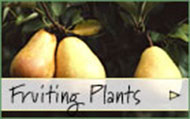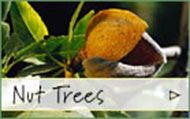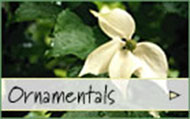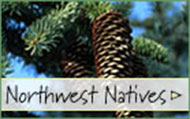
With a range of heights for every situation and diverse variations in leaf shapes and colorful interest, maples are a great addition to the backyard. Maples provide shade, ornamental beauty, sap, and food for wildlife. These are the Maple species that we typically carry:
Vine Maple - A small tree or understory shrub native to the Pacific NW. Multi-stemmed with colorful new growth in the spring that has a reddish tinge, followed by small purple flower clusters. Produces paired winged seed pods in summer that look like red bow ties. In the fall leaves change to brilliant orange and red. The dried wood is very hard and used by tool makers. Hardy to -25° F.
Big Leaf Maple - Native range from AK to CA. Massive leaves up to 15" across on a large, fast growing tree. Edible flower clusters and sap that can be used for syrup. Yellow fall color. Long-lived tree that is valued for lumber and fuel. Used to shade areas quickly and planted in rocky soil or slopes for erosion control. Big Leaf Maples have a huge root system that is not compatible near foundations, septic systems or sidewalks. In an open or forest setting this is a tree that will attract and feed wildlife. Grows to 75' x 50'. Zone 5-8.
Japanese Maple - The red-leaf variety, 'Atropurpureum' retains its reddish/purple color well throughout the season. In the fall, the leaves will change to a vivid burgundy red and can be used in the landscape to contrast with small evergreens and other colorful companion plants. Stays small, under 20 ft. Zone 5-9.
Sugar Maple - The main commercial source of maple syrup. Native to Central and Eastern North America. Very long lived, widely adapted and hardy. Grows on average to 100 ft. Autumn color is the main attraction for this useful ornamental tree. Zone 3-8.
|

 Click here to view items for:
Winter / Spring (Jan-June)
Summer (July-Oct)
Fall (Nov-Dec)
Click here to view items for:
Winter / Spring (Jan-June)
Summer (July-Oct)
Fall (Nov-Dec)












